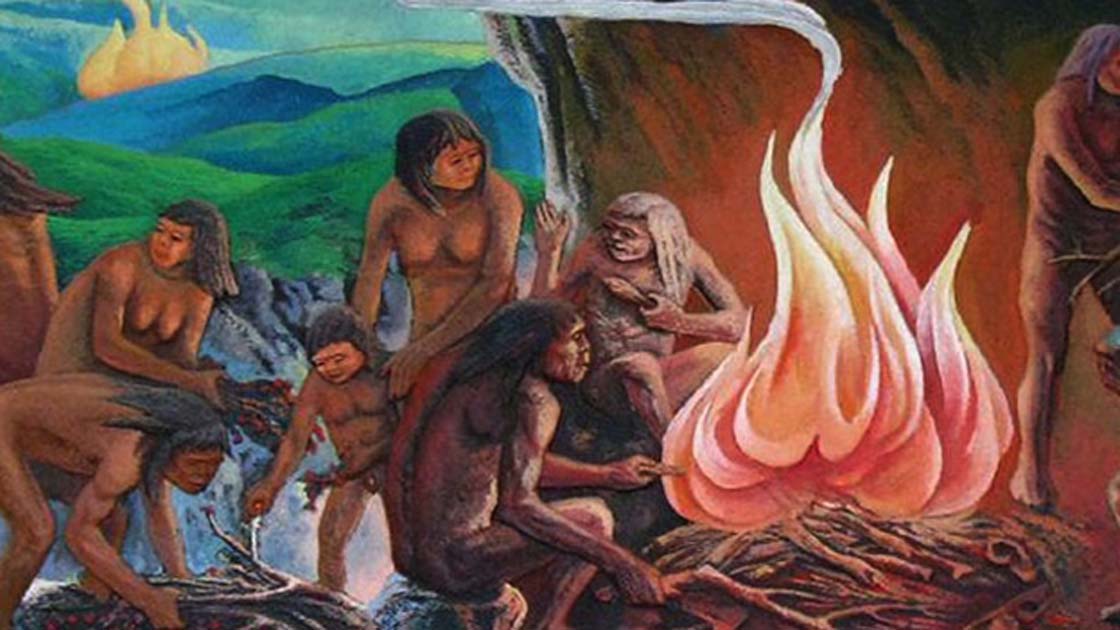Cave Holds Evidence of a 20,000-year-old Kangaroo Meat Family BBQ
Some 20,000 years ago a family of eight to ten people shared in a timeless tradition – they had a BBQ. But the meat on their menu was probably not a kind of steak you’d normally put on your grill…they were feasting on kangaroo.
All archaeological indications point to the event: the campfire ash, kangaroo bones, and stone tools scattered about a small cave in the Hamersley Ranges of Pilbara, Australia. According to ABC News, hundreds of artifacts have been unearthed so far. In fact, the team excavating the site have no choice but to use small gardening tools to go through the huge cache of prehistoric items.

An archaeological dig is underway in this cave, located about 10km from BHP Billiton's Mining Area C iron ore mine in the West Australian Pilbara region. (ABC News)
That project is a partnership between scientists from Scarp Archaeology and the mining company BHP (which is leasing the land), and local indigenous people. Dr. Michael Slack is leading the group. He provided ABC News with an overview of the most recent finds:
“The guys have just uncovered an ancient campfire that, given the depth below the surface and the relationship with the stones around it, we think is potentially around 20,000 years old. To make it even better, they found flake stone artefacts right next to the charcoal. So we'll get a really good association between people and the campfire itself, and we'll have a really clear idea of how old it is.”
- Australian Aborigine Creation Stories: Rainbow Serpent and Emus in the Stars
- 12,800-year-old campsite found at extreme altitude in Peruvian Andes
The scientists think the stone tools were probably used in preparing the kangaroo meat for cooking. “We'll have to have a look at them under the microscope, but they are the pieces that people were using in the site,” Dr. Slack said.

Kangaroos in a pasture. (Public Domain)
Dr. Slack also explained the immensity of the project to ABC News:
“You only have to look at the ground in this cave and you'll see hundreds and hundreds of little chips of stone, and these were all coming off stone artefacts that were used as tools. Some of them just look really pretty, others you can see have lots of evidence of wear on the side. This little cave has hundreds of them on the surface which is very rare for the Pilbara. Quite often the caves have nothing … but they are lying around. We looked at a bunch of caves out here and as soon as we got to this one we thought, 'wow we really want to come and do some archaeology here' — it's going to be really rich and there's the potential there to tell a good story about what the Aboriginal people were doing here over possibly the last 40,000 years.”
- How to get to Australia … more than 50,000 years ago
- Oldest and largest concentration of ancient rock art under threat from Australian Government
Some of the oldest tools found at the cave have been dated to 32,000 years ago, making the cave one of the oldest sites in the area. It seems the site was primarily used during the last ice age. And that makes it a rare archaeological site, as Dr. Slack explained, “[…] in terms of the size in Australia and the number of places that we know to be over 10,000 years, we are still only looking at dozens of places in the continent, in the period of up to 65,000-70,000 years [old]. So they are really significant places to study and understand.”

Examples of ancient stone tools uncovered on an archaeological dig in the Hamersley Ranges. (ABC News)
Researchers suggest that the campfire and kangaroo bones are probably the remnants of a family BBQ for eight to ten people who sought shelter in the cave every few years. The campfire is of course just a fine ash now – 20 cm (7.87 inches) of it – but it contains some pieces of charcoal which are headed off for radiocarbon dating.
Top Image: Representation of prehistoric people around a campfire. Source: Best Cave 2018

















Comments
concur
jolly r hansen
Why does the picture accompanying the article make the aborigines look more ape-like than human? This is very misleading. Australia was settled by anatomically-, culturally-modern humans 50-60K years ago. It borders on racist to portray them as hunched-over, beetle-browed "ape-men" at 25K years ago!